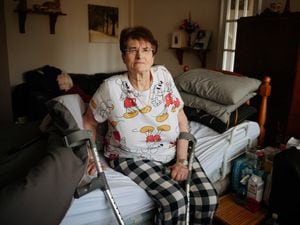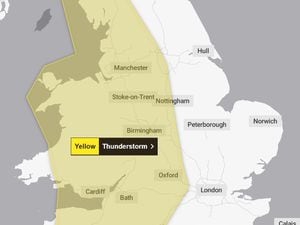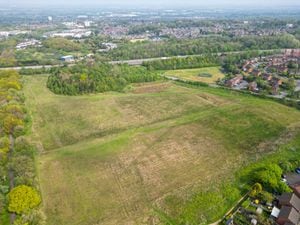Telford retail park death: Driver is ‘haunted’ by collision
A man accused of killing a great-grandmother by driving carelessly at a Telford retail park told a jury the incident still haunts him and he feels responsible every day.

Andrew Richards has denied causing the death of Janet Lane by careless driving at Wrekin Retail Park, saying his view was obstructed by the A-pillar in his Volkswagen Transporter van.
Mrs Lane, a great-grandmother from Trench, Telford, died at the scene.
Richards, 55, of Orchard Close, Cressage, gave evidence during his trial at Shrewsbury Crown Court yesterday and said the effect of the incident on him had been profound.
He told the jury: “I feel guilty every day, I feel totally responsible every day.
“There is not a day that goes by that I don’t, and there are days when I would happily exchange places with Mrs Lane.
The case so far:
“In the days after the event there were sleepless nights, and waking hours which I spent trying to understand why it had happened.
“I was driving to the best of my ability and I wasn’t being careless.”
Police have told the court that Richards could “easily” have avoided hitting Mrs Lane, even if she was in his van’s blind spot.
Officers carried out a reconstruction and have concluded that the tragedy could still have been prevented.
In December 2016, forensic collision investigation specialist Pc Nik Stafford and a fellow officer carried out a reconstruction at the retail park using CCTV footage. Pc Stafford drove Richards’ van and the other officer stood at various positions as the two worked to ascertain what visibility was like.
The jury was shown head camera footage from the day of the reconstruction.
Pc Stafford’s conclusion was that Richards could have moved his head to see around the pillar.
He was questioned in court yesterday, and asked to summarise his findings.
Prosecution barrister Mr Matthew Barnes said: “The A pillar between the windshield and driver side mirror could have reduced the view that the driver had. However, the blind spot could easily be eliminated through a movement of the driver’s head.”
Pc Stafford confirmed that was his view, and later took questions from defence representative Mr Paul Smith and Judge Peter Barrie.
Mr Smith said: “There were three variables on that day; the driver’s head, the position of the A pillar and the pedestrian’s route. If all of those three aligned it is possible that the pedestrian could have remained obstructed throughout the arc of the vehicle, behind the pillar.”
He said because of the unknown factors a reconstruction could not accurately tell the story.
In police interviews Richards said that when he felt the sensation of his vehicle going over something he thought it was a speed bump. He previously described himself as a competent driver with more than 30 years’ experience.
The trial continues.





